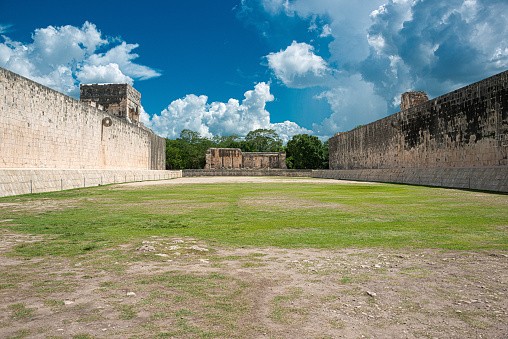
A pre-Hispanic-era ball court has been found at a newly reported archaeological site in Mexico.
Ancient Mesoamerican Structure
The Mexican National Institute of Anthropology and History (INAH) reported the discovery of a circular structure in the town of Tecacahuaco in the Huasteca Region in Hidalgo, Mexico. In Nahuatl language, Tecacahuaco is translated as "place of hollow stone.".
The structure was first discovered by a local man seeking to expand his land and was later recognized by a notice from the city council of Atlapexco. The Atlapexco city council notified the INAH of the unearthing of a circular base there in May 2024,
After the report of the find, three working visits were made by the Ministry of Culture of the Government of Mexico through the Hidalgo Center of the INAH. They aimed to document the features of the monument and set measures for its conservation.
On the last visit, June 15, the head of the state representation of INAH, Osvaldo José Sterpone, focused on the record of the building and other nearby architectural remains.
These findings of photogrammetric works and analyses give a certainty and identification to this area of monuments. The characteristics of the buildings were duly documented on records of the Public Registry of Monuments and Archaeological and Historical Zones.
Some characteristics of this pre-Hispanic building include its well-preserved stairway, a V-shaped wall, remnants of mud plaster, and substructure evidence of a larger construction.
The general age of the circular structure and its adjacent remains remains unclear. Nevertheless, the fragments of obsidian collected from the ground surface suggest that the site was most likely occupied during the Postclassic period of Mesoamerican history (around A.D. 900-1521). The end of this period corresponds with the beginning of the Spanish conquest of the region.
The Pre-Hispanic Mesoamerican ball courts like these were used for various ball games. However, these ball games were not solely done for entertainment purposes.
The games were basically a ritual and political function of the pre-Hispanic societies. The ball courts often occupy an unequaled valuable space in the large ceremonial centers of other cities.
READ ALSO : Stone Human-Like Carvings Found in Mexico City Aztec Temple Could Have Served as Offerings to Deities
Site of Traditional Healing Practice
After identifying the circular structure, the researchers asked older people to find out more about the site. It is said that healers used to come to the site and put up offerings and prayers for their good health until a few decades ago.
If a sick person needed to be treated, the healer and the patient would travel to the site, bearing in garlands, liquor, bread, or even a large tamale called zacahuil. This ritual practice is a combination of Catholic rites and pre-Hispanic sacred traditions.
Mesoamerican traditional medicine is based on knowledge and practices that emerge from systems and views very different from those in the West. Over time, this tradition's influence was limited by the almost immediate imposition of a very different system of care that took little advantage of the richness found in pre-Hispanic medicine.
RELATED ARTICLE : Mass Graves in Chichen Itza Reveal Human Offerings in Ancient Maya Civilization; Genomic Analysis Shows How They Chose Sacrificed Victims
Check out more news and information on Ancient Structure in Science Times.
© 2026 ScienceTimes.com All rights reserved. Do not reproduce without permission. The window to the world of Science Times.










